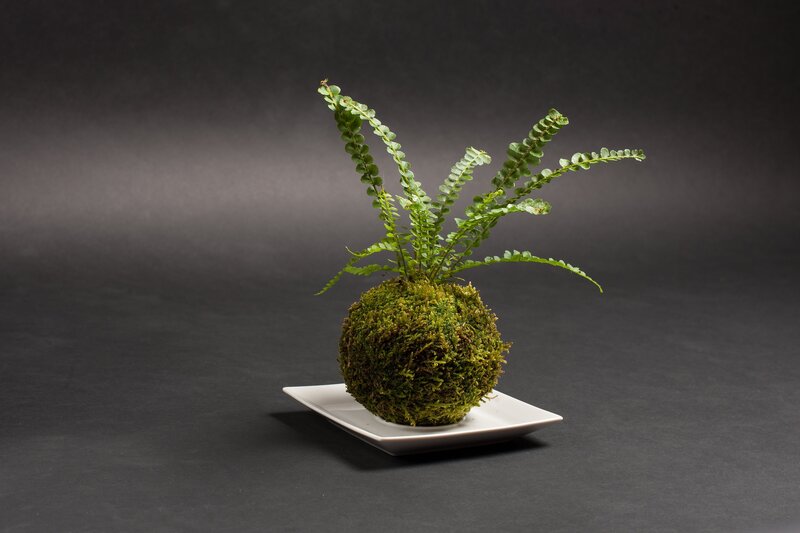Successfully care for your delicate orchids
Posted on 18/08/2025
Successfully Care for Your Delicate Orchids: The Complete Guide
Orchids are often considered one of the most exquisite and delicate houseplants. However, despite their fragile appearance, caring for orchids can be a rewarding and achievable endeavor for anyone, from novice gardeners to seasoned plant enthusiasts. In this comprehensive guide, we will explore everything you need to know to successfully care for your delicate orchids, ensuring thriving blooms and healthy plants throughout the year.

Understanding Orchid Varieties
Before diving into the specifics of orchid care, it's important to recognize that orchids are a vast plant family. With over 25,000 natural species and more than 100,000 hybrids, their care requirements can vary greatly. Here are some of the most popular types you're likely to encounter:
- Phalaenopsis (Moth Orchids): Easiest to care for and most common in homes.
- Cattleya: Known for large, fragrant, and colorful blooms.
- Dendrobium: Varieties range from beginner-friendly to highly specialized.
- Oncidium (Dancing Ladies): Recognizable by their spray of small flowers.
- Vanda: Requires high humidity; preferred by advanced growers.
Each type can have unique requirements, but most of their needs overlap. Understanding your specific orchid type is the first step towards successful orchid care.
Orchid Light Requirements
How Much Light Do Orchids Need?
Light is one of the most crucial factors for successful orchid growth. Most orchids prefer bright, indirect sunlight. Direct sunlight can scorch the leaves, while too little light inhibits flowering.
- Phalaenopsis: Thrives in windows with eastern exposure or north-facing light. Avoid harsh noon sun.
- Cattleya & Vanda: Enjoy brighter conditions but need some shading during midday.
- Dendrobium & Oncidium: Appreciate filtered light through a sheer curtain.
Pro Tip: If your orchid's leaves are dark green, it's likely not getting enough light. A healthy orchid should have light-to-medium green leaves.
Artificial Lighting for Orchids
For homes with limited natural light, orchids can thrive under grow lights. LED or fluorescent grow lights placed 10-12 inches above the plant provide adequate illumination. Aim for 12-14 hours of light per day, especially during winter.
Ideal Temperature and Humidity for Orchids
Maintaining the Right Temperature
Temperature requirements vary with orchid species. However, most household orchids do well in the following ranges:
- Daytime: 65-80?F (18-27?C)
- Nighttime: 55-65?F (12-18?C)
Sudden temperature fluctuations or cold drafts can cause stress to delicate orchids, resulting in bud drop or stunted growth.
Providing Adequate Humidity
Orchids naturally grow in humid, tropical environments. Most orchids prefer humidity levels between 40% and 60%. In dry indoor climates:
- Place a humidity tray near your plant.
- Use a room humidifier if air is exceptionally dry.
- Group plants together to create a more humid microclimate.
- Mist the leaves in the morning, but avoid soaking the plant as this can encourage fungal issues.
Watering Your Orchids: A Careful Balance
How Often Should You Water Orchids?
Proper watering is a critical component of delicate orchid care. Overwatering is the most common mistake and can lead to root rot.
- Phalaenopsis: Water once a week during active growth and every 10-14 days in winter.
- Cattleya, Dendrobium, and Oncidium: Typically require more frequent watering during their growth period.
Always water thoroughly and drain excess water completely. Never let your orchid sit in water.
Tips for Watering Success
- Water your orchid in the morning to allow leaves to dry during the day.
- Use lukewarm, distilled, or rainwater if possible as tap water can contain minerals harmful to sensitive orchids.
- Feel the potting media with your fingers. Water only when it feels almost dry, not fully dry or soggy.
Signs of Proper Watering:
- Roots are green and plump after watering.
- Leaves are firm, not limp or wrinkled.
- No standing water in the pot.
Choosing the Right Potting Medium and Repotting Orchids
Best Potting Mix for Orchids
Orchids require a well-draining, airy potting medium. Typical options include:
- Bark chips: Allow air to the roots and drain quickly.
- Sphagnum moss: Holds moisture longer; suits orchids that need more humidity.
- Coconut coir or chips: Eco-friendly alternative to bark.
- Charcoal and perlite: Often mixed in to facilitate drainage and prevent decomposition.
Never use regular potting soil, as it suffocates orchid roots and leads to root rot.
When and How to Repot Orchids
Repotting is usually needed every 1-2 years or when the potting mix breaks down. Other signs your orchid needs repotting include:
- Roots are circling the inside of the pot.
- Potting mix retains moisture too long or smells sour.
- Roots are growing out of the pot.
Steps to Repot Delicate Orchids:
- Gently remove the orchid from its container, teasing away old potting media.
- Trim dead or mushy roots with sterile scissors.
- Place in a new or sterilized pot with fresh orchid mix.
- Do not water immediately; wait a few days to avoid shocking the roots.
Feeding and Fertilizing Orchids
How to Fertilize Orchids for Healthy Growth
Consistent feeding ensures lush foliage and vibrant blooms. Use a balanced, water-soluble orchid fertilizer (20-20-20 or similar). Feed your orchid every two weeks during the growing season (spring and summer), reducing frequency in fall and winter.
- Always water before fertilizing to avoid burning the roots.
- Mix fertilizer at half the recommended strength for delicate orchids.
- Flush the pot with plain water monthly to remove salt buildup.
Encouraging Orchid Flowers to Rebloom
Many orchid owners wonder why their plant won't rebloom. To successfully encourage orchids to flower again, consider these tips:
- Temperature drop: Many orchids need a drop of 10?F (5?C) at night to initiate bud formation.
- Consistent light exposure: Ensure adequate indirect light throughout their growth cycle.
- Proper feeding: Fertilize regularly, especially during active growth.
- Trim spent flower spikes above a node to sometimes prompt a new spike.
Patience is key--some orchids may take several months of rest between blooming cycles.
Common Orchid Problems and Solutions
Troubleshooting Orchid Issues
- Yellowing Leaves: Usually a sign of overwatering, insufficient light, or natural leaf shedding. Adjust care accordingly.
- Limp, Wrinkled Leaves: Indicates underwatering or root problems. Check roots for rot and adjust watering routine.
- No Flowers: Often due to lack of light, insufficient temperature drop, or depleted potting mix. Address light and temperature first.
- Root Rot: Caused by excessive moisture or poor drainage. Repot immediately and remove affected roots.
- Pests (e.g., scale, mealybugs): Wipe leaves with soapy water, use neem oil, or treat severely infested plants with insecticide.
The Orchid Care Calendar
Simplify care for your delicate orchid with this seasonal guide:
- Spring: Resume regular watering and fertilizer. Repot if needed. Watch for new leaves and roots.
- Summer: Maintain humidity and protect from harsh sunlight. Increase feeding as growth peaks.
- Autumn: Reduce feeding. Watch for temperature drops; some types begin flowering.
- Winter: Water less frequently. Ensure adequate light, perhaps using grow lights. Some orchids enter dormancy.

Frequently Asked Questions About Orchid Care
-
Why are my orchid's roots exposed?
It's natural for orchids to send aerial roots outside the pot. These help absorb moisture and nutrients from the air--don't cut them off! -
Should I trim the flower spike after blooming?
For Phalaenopsis, cut the spent spike above a node to encourage a new branch. -
Are orchids poisonous to pets?
Most common orchids are non-toxic for cats and dogs, but always check the specific type. -
Can I grow orchids outdoors?
In tropical or subtropical climates, many orchids thrive outdoors in shade. In colder regions, bring them inside. -
How long do orchid flowers last?
Depending on species and care, orchid blooms can last from a few weeks to several months!
Conclusion: Nurturing Thriving, Delicate Orchids
With the right knowledge and a gentle touch, successfully caring for your delicate orchids is entirely within reach. Prioritize their lighting, temperature, humidity, and watering needs. Use proper potting mixes and containers, feed and repot at the right times, and always keep an eye out for signs of stress or pests.
Remember: Patience and consistent care will help your orchid flourish, rewarding you with some of the plant world's most enchanting blooms. Whether you're a beginner or a dedicated grower, the beauty and grace of orchids can be yours to enjoy year after year--just follow the guidelines in this complete care guide and watch your delicate orchids thrive!

